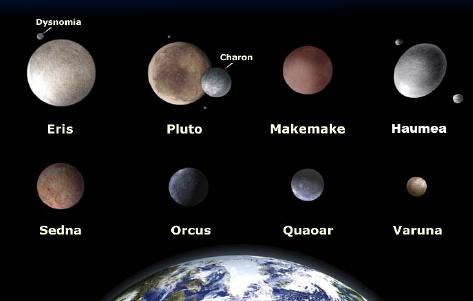
|
|
|
|
September 19, 2008
Dwarf planets on the rise
By W. Scott Kardel, Public Affairs Coordinator, Palomar Observatory This week the International Astronomical Union announced ( http://www.iau.org/public_press/news/release/iau0807/) that the number of officially named dwarf planets has risen to five. Three of these worlds were discovered using the Samuel Oschin Telescope at Caltech's Palomar Observatory. The telescope passes its observational data via the High-Performance Wireless Research and Education Network (HPWREN). The dwarf planets on the list are Ceres, Pluto, Haumea, Eris and Makemake. Eris, Makemake and Haumea were found at Palomar, although credit for the discovery of Haumea has been disputed (see http://www.mikebrownsplanets.com/2008/09/haumea.html). Ceres, discovered in 1801, is the lone member of the dwarf planet roll call that is not located in the outer solar system. The other members all reside in a belt of frozen worlds beyond the orbit of Neptune known as the Kuiper Belt. Haumea, which received its name this week is perhaps the most unusual world in the solar system. It is oblong in shape, rotates in just 4 hours and is thought to be the remnant of a massive collision of worlds in the outer solar system. |
